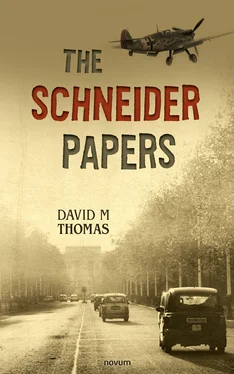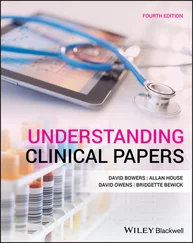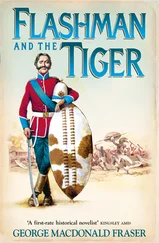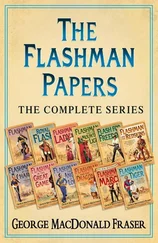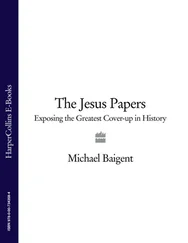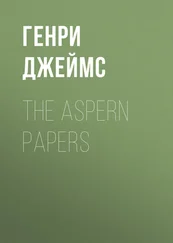Contents
Imprint 5 Imprint All rights of distribution, also through movies, radio and television, photomechanical reproduction, sound carrier, electronic medium and reprinting in excerpts are reserved. © 2022 novum publishing ISBN print edition: 978-3-99130-077-9 ISBN e-book: 978-3-99130-078-6 Editor: Ashleigh Brassfield, DipEdit Cover images: Navarone, Bowie15, Ruslan Huzau, Liligraphie | Dreamstime.com Cover design, layout & typesetting: novum publishing www.novum-publishing.co.uk
Summary 6 Summary 1936: Squadron Leader Harald Mason, a German-born naturalised British airman, is sent by a concerned Foreign Office to Berlin to unearth Luftwaffe expansion plans and investigate the sustainability of high-octane aviation fuel supply in times of war. A narrative of disparate characters, from the leonine intelligence chief Major Alastair Cartwright MC in London, to the clever and elegant Elisabeth Schneider, economist, and a Soviet spy embedded in IG Farben AG, the most powerful chemical combine in Europe. Ivan Mikhailovich Maisky, the Soviet Ambassador to the Court of St James’, s needs something to turn national rancor away from the Soviet Union and towards Germany. It was Elisabeth who enlightened the Soviet NKVD to the extent of American banking and industry funding of the nascent pre-1933 Hitler regime, and subsequent Wall Street and business relationships with IG Farben. Mason befriends Werner Scribner, a technical draftsman, a Catholic and a Bavarian monarchist at the new Luftwaffe Air Ministry in Berlin – determined to bring down the Anti-Christ Hitler – juxtaposed with his father Klaus Scribner, who was spiritually re-born in the chaos that was Weimar Germany. It’s the conflict and accord of characters in a discorded and dangerous European world. This is a story of American business funding Nazi Germany, and the rebuilding of Soviet Russia, as part of President FR Roosevelt’s New Deal programme to get ‘America working again.’
Chapter 1: 1931 – the Industrial Resource Section 7
Chapter 2: 1932 Moscow: Ambassador Maisky 18
Chapter 3: 1936 – Joint Intelligence Committee 24
Chapter 4: IG Farbenindustrie AG, Frankfurt and Ludwigshaven 32
Chapter 5: Wednesday, 9th September 1936 49
Chapter 6: Monday, 14th September 1936 57
Chapter 7: Monday, 21st September 1936 73
Chapter 8: Tuesday, September 22nd 1936 87
Chapter 9: New York: Tuesday, September 22nd 1936 103
Chapter 10: Berlin: September 22nd 1936 – evening 109
Chapter 11: Joachim von Ribbentrop 118
Chapter 12: Berlin: Wednesday, 23rd September 1936. 122
Chapter 13: Werner Scribner – to 1930 134
Chapter 14: Werner Scribner 1930–1933 150
Chapter 15: Berlin: Wednesday, 23rd September 1936: an afternoon with Werner Scribner 160
Chapter 16: Berlin: Thursday, 24th September 1936: lunch with Lefoy in the Tiergarten 171
Chapter 17: Berlin: Thursday, 24th September 1936: an evening at the Red Finger 178
Chapter 18: Berlin: Thursday, 24th September 1936: the Keppler Circle 192
Chapter 19: Elisabeth Schlyer goes to university 199
Chapter 20: 1925: Elisabeth Schlyer joins the Party 207
Chapter 21: 1925: Elisabeth Schlyer goes to America 212
Chapter 22: 1930: Elizabeth Schneider née Schyler 218
Chapter 23: New York: Standard Oil and IG Farben 222
Chapter 24: Elisabeth Schneider in Zurich, December 1933 232
Chapter 25: Moscow: Feb – March 1936: Yagoda 240
Chapter 26: Berlin: Wednesday, 23rd September 1936: dinner with the Schneiders’ 247
Chapter 27: 1914–1921: Klaus Scribner, father of Werner Scribner 259
Chapter 28: May 1921: Klaus Scribner in Munich 274
Chapter 29: Berlin: Friday, 25th September 1936: the Haus Vaterland 287
Chapter 30: Berlin: Saturday, 26th September 1936: Aviation Museum 298
Chapter 31: Berlin: Sunday, 27th September 1936: Klemper family 307
Chapter 32: Berlin: Monday, 28th September 1936: Mason learns about synthetic oil 321
Chapter 33: Leipzig: Tuesday, 29th September 1936 335
Summary 359
Chapter 34: Leuna: Wednesday, 30th September 1936 362
Chapter 35: Berlin: Klaus Scribner at home 371
Chapter 36: Moscow: October 1st 1936: Savostin interrogated 381
Chapter 37: Berlin: Thursday, October 1st 1936: Wener Scribner 393
Chapter 38: Berlin: Tuesday, October 6th, 1936: Werner Scribner 399
Chapter 39: Berlin: Wednesday, October 7th 1936: Werner Scribner goes home 403
Chapter 40: Thursday, 8th October 1936: train journey 408
Chapter 41: Ostend: Thursday 8th October: celebratory dinner 442
Addendum 454
Principal Characters 456
Imprint
All rights of distribution, also through movies, radio and television, photomechanical reproduction, sound carrier, electronic medium and reprinting in excerpts are reserved.
© 2022 novum publishing
ISBN print edition: 978-3-99130-077-9
ISBN e-book: 978-3-99130-078-6
Editor: Ashleigh Brassfield, DipEdit
Cover images: Navarone, Bowie15, Ruslan Huzau, Liligraphie | Dreamstime.com
Cover design, layout & typesetting: novum publishing
www.novum-publishing.co.uk
Summary
1936: Squadron Leader Harald Mason, a German-born naturalised British airman, is sent by a concerned Foreign Office to Berlin to unearth Luftwaffe expansion plans and investigate the sustainability of high-octane aviation fuel supply in times of war. A narrative of disparate characters, from the leonine intelligence chief Major Alastair Cartwright MC in London, to the clever and elegant Elisabeth Schneider, economist, and a Soviet spy embedded in IG Farben AG, the most powerful chemical combine in Europe. Ivan Mikhailovich Maisky, the Soviet Ambassador to the Court of St James’, s needs something to turn national rancor away from the Soviet Union and towards Germany. It was Elisabeth who enlightened the Soviet NKVD to the extent of American banking and industry funding of the nascent pre-1933 Hitler regime, and subsequent Wall Street and business relationships with IG Farben. Mason befriends Werner Scribner, a technical draftsman, a Catholic and a Bavarian monarchist at the new Luftwaffe Air Ministry in Berlin – determined to bring down the Anti-Christ Hitler – juxtaposed with his father Klaus Scribner, who was spiritually re-born in the chaos that was Weimar Germany. It’s the conflict and accord of characters in a discorded and dangerous European world.
This is a story of American business funding Nazi Germany, and the rebuilding of Soviet Russia, as part of President FR Roosevelt’s New Deal programme to get ‘America working again.’
Chapter 1: 1931 – the Industrial Resource Section
Major Alastair Cartwright MC convinced his superiors that although military intelligence was obviously crucial, industrial capacity, skilled manpower, and access to strategic commodities were equally if not more important in assessing a country’s ability to fight a war.
He impressed upon his audience one spring morning in 1931 the story of the totally brilliant and simple Schlieffen Plan of 1914, based on the successful German invasion of France in 1870 under Count Alfred von Schlieffen, late Chief of the Imperial General Staff. It was totally brilliant because it was simple and it worked, and there were no new impediments to stop it working again. While a small force would contain Russia in the east, the bulk of the German army would brush aside poor old neutral Belgium, smash into France and bring about its collapse before anyone knew about it. Simplicity itself.
Cartwright continued his story. As a blueprint for war it was bold, clear, but seriously flawed. Germany’s military leaders in 1914 had convinced themselves that France’s army would be no more able to withstand the destructive power of sophisticated weaponry than it had been a generation earlier and would consequently surrender in a few weeks.
Читать дальше
